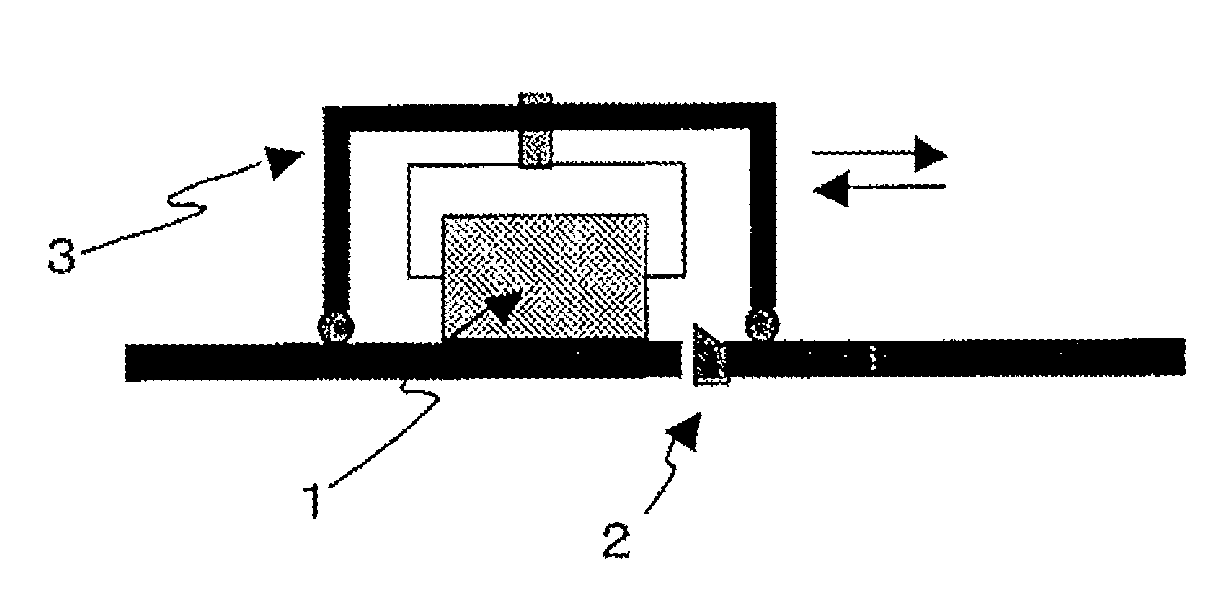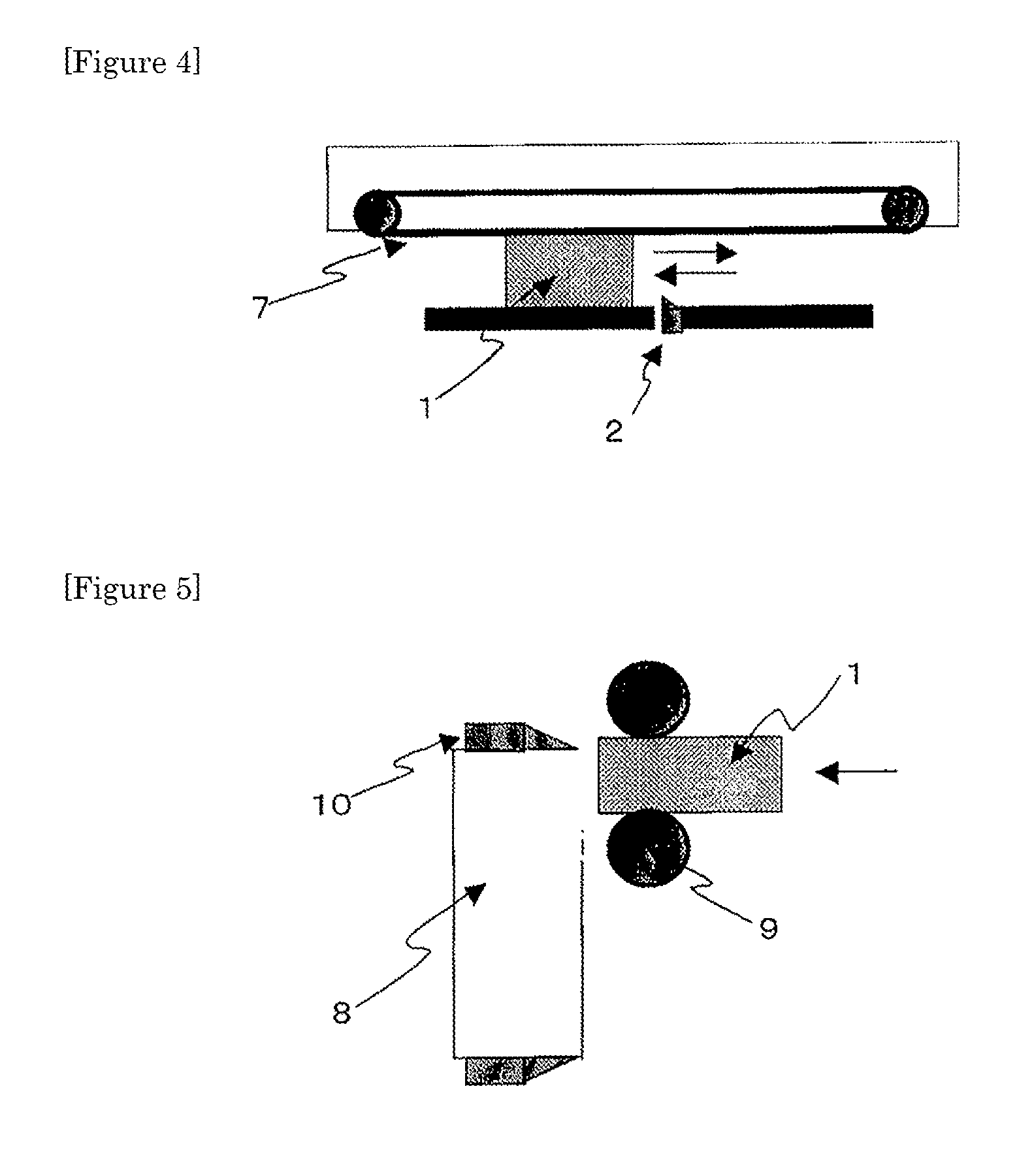Process for producing thermoplastic resin foam film and thermoplastic resin foam film
- Summary
- Abstract
- Description
- Claims
- Application Information
AI Technical Summary
Benefits of technology
Problems solved by technology
Method used
Image
Examples
example 1
[0058]A rectangular body foam of 450 mm×300 mm×25 mm having a density of 210 kg / m3 was prepared by preliminary expansion and molding of a heat-resisting expandable styrenic resin (low expansion ratio), Heatmax (trade name) HM5 manufactured by KANEKA CORPORATION. The rectangular foam was cut to a desired thickness of 0.3 mm by using the following cutting machine.
[0059]The cutting machine used is a wood-processing cutting machine having a supporting plate moving reciprocally on a rail in parallel with the floor face, in which a foam is cut continuously, as it is connected to the lower area of the supporting plate, reciprocated on the blade fixed facing upward for cutting, pushed downward at a desired cutting thickness after each cutting, i.e., after each reciprocation. The bias angle was set to 10°.
[0060]The thin film obtained by cutting was a film a highly curled into a roll having a diameter of about 15 mm, but, when the film is held extended between two aluminum plates, heated in a...
example 2
[0062]The rectangular foam obtained in Example 1 was cut to a desired thickness of 0.7 mm by using the same cutting machine used in Example 1 and converted into a flat film in a manner similar to Example 1. Evaluation results are shown in Table 1. Lamination of an aluminum foil having a thickness of 0.012 mm in a manner similar to Example 1 gave a high-rigidity laminate foam film.
example 3
[0063]A rectangular body foam of 450 mm×300 mm×25 mm having a density of 140 kg / m3 was prepared by preliminary expansion and molding of a heat-resisting expandable styrenic resin (low expansion ratio), Heatmax (trade name) HM5 manufactured by KANEKA CORPORATION, and the rectangular body foam was cut to a desired thickness of 0.3 mm and flattened in a manner similar to Example 1. Evaluation results are shown in Table 1. An aluminum foil having a thickness of 0.012 mm was bonded in a manner similar to Example 1, to give a high-rigidity laminate foam film.
PUM
| Property | Measurement | Unit |
|---|---|---|
| Fraction | aaaaa | aaaaa |
| Thickness | aaaaa | aaaaa |
| Thickness | aaaaa | aaaaa |
Abstract
Description
Claims
Application Information
 Login to View More
Login to View More - R&D
- Intellectual Property
- Life Sciences
- Materials
- Tech Scout
- Unparalleled Data Quality
- Higher Quality Content
- 60% Fewer Hallucinations
Browse by: Latest US Patents, China's latest patents, Technical Efficacy Thesaurus, Application Domain, Technology Topic, Popular Technical Reports.
© 2025 PatSnap. All rights reserved.Legal|Privacy policy|Modern Slavery Act Transparency Statement|Sitemap|About US| Contact US: help@patsnap.com



